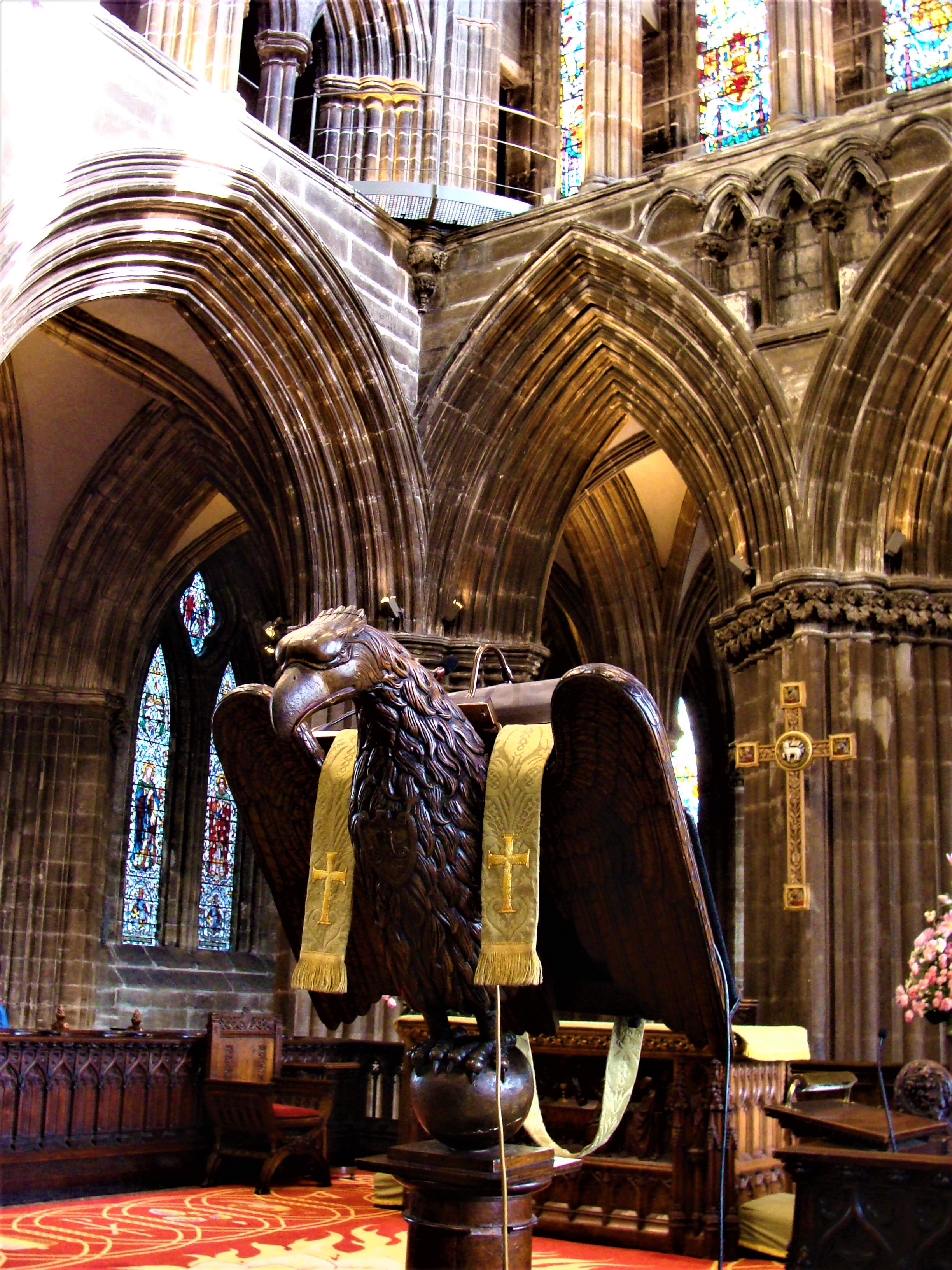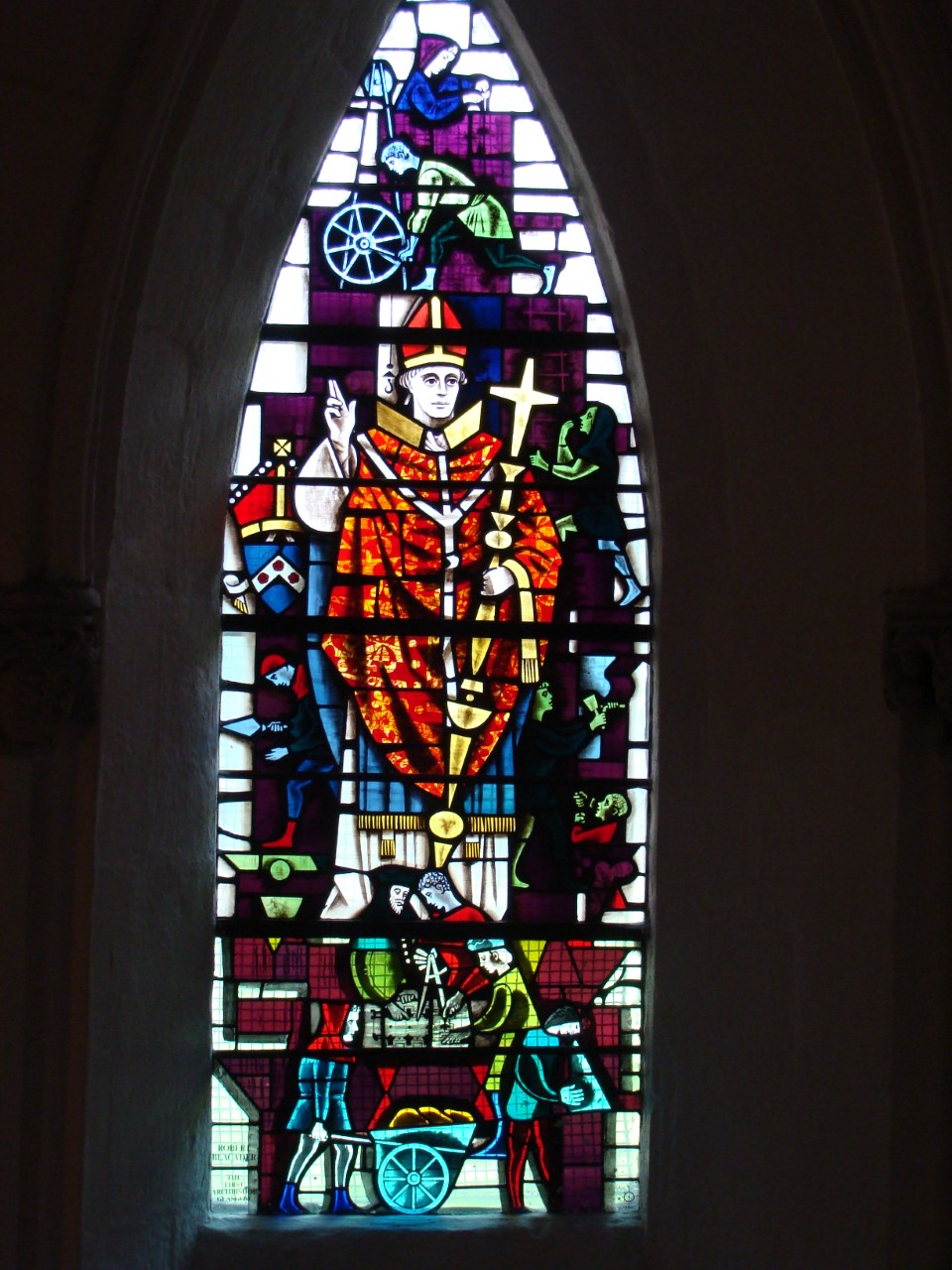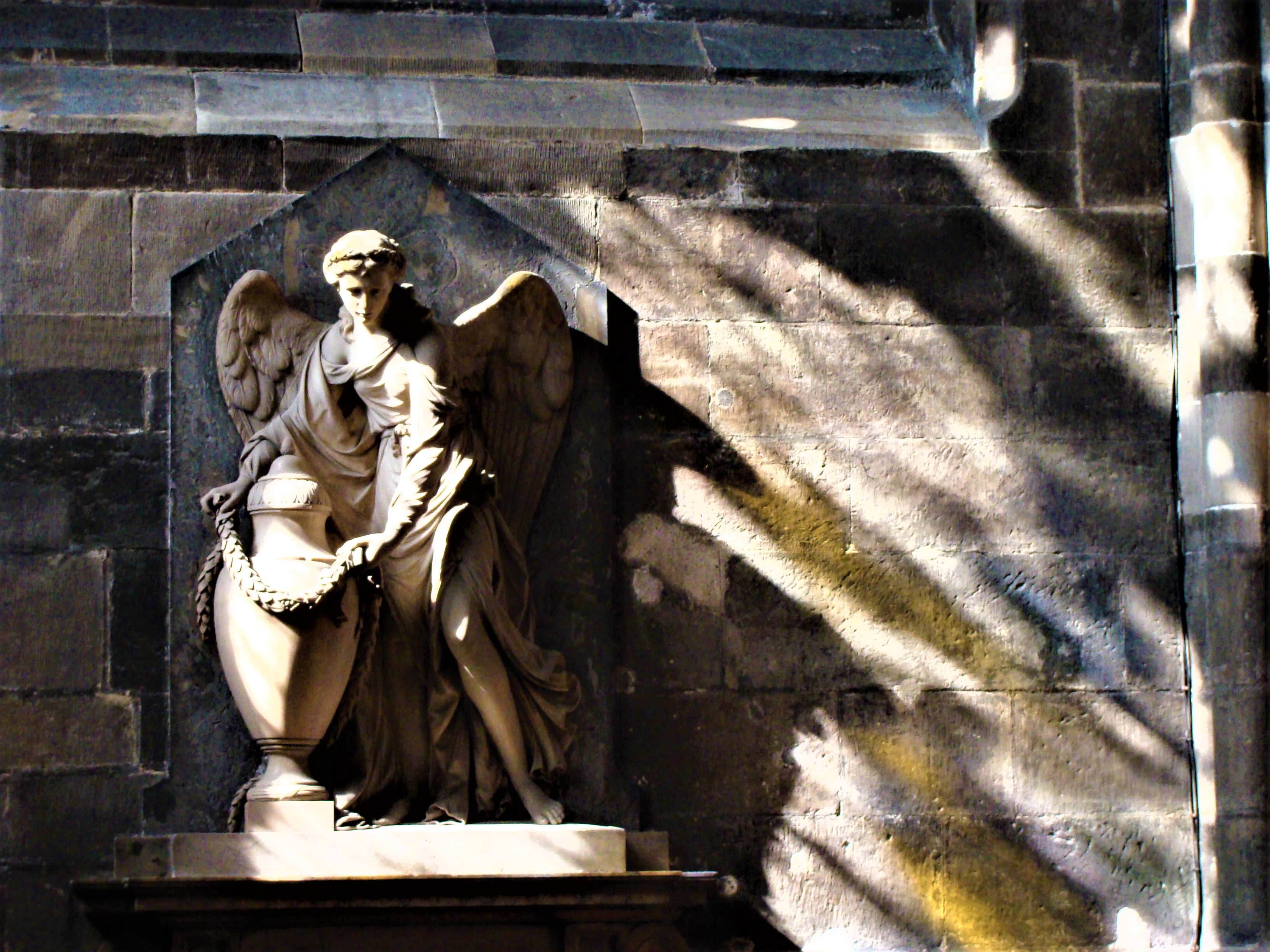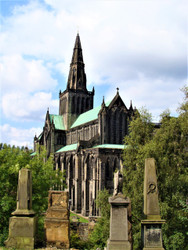Glasgow Cathedral and Necropolis | Dallaswear
Posted by Callum McCrimmon on 1st Jan 1970
Glasgow Cathedral and Necropolis
Glasgow Cathedral is stunningly beautiful. Close to the heart of Glasgow it is a fine example of Scottish Gothic Architecture. It is the only medieval Cathedral on mainland Scotland to have survived the 1560 Reformation. The original church was small and made of wood. It was built by the city’s patron saint and founder, St Mungo, also known as St Kentigern. Mungo was buried here in 612AD and his tomb became a shrine. He was the first Bishop of Strathclyde and had a vast diocese reaching from Loch Lomond to Cumbria. Upon his death his shrine became a centre for Christian pilgrimage. In 1451 the Pope let it be known that a pilgrimage to Glasgow Cathedral would be on a parr to a pilgrimage to Rome itself!

As with so many churches, the church that St Mungo built was added to and altered over the years and slowly emerged as the building we see today. There are many different parts to explore and so much to see. It is a fascinating place to visit. The Scottish Gothic architecture is impressive and was built between the 13th and 14th Centuries. There are beautiful examples of carved wood everywhere and the stained-glass windows are a joy to behold. The most recent of these, is the Millennium Window in the north wall of the nave. Unveiled by HRH Princess Anne on 3rd June 1999, it was commissioned by three local schools. The window is astonishingly beautiful and seems to hold every shade of blue imaginable.
Completed using traditional and complex methods such as silver staining, painting and multilayer etching it is modern but in keeping with the other older windows. Other stained-glass windows in the Cathedral commemorate the part that local tradesmen played in saving the building from destruction during the Reformation of 1560. The Cathedral meant a great deal to the people of Glasgow who were not prepared to stand by while it was destroyed. Glasgow cathedral is recognised as having one of the finest post-war collections of stained-glass windows in the whole of Britain.

When first entering the building, it seems dark but as you start to move around it becomes apparent just how beautiful the lighting is. It creates an amazing atmosphere. I have visited many times and have seen people moved to tears on every occasion.
Being so old the Cathedral has a long and fascinating history. There are guided tours by knowledgeable volunteers who can impart that history and point out things that the casual visitor may miss. An example of this may be the model of a ship hanging in the St Nicholas Chapel at the east end of the lower church. It seemed a strange thing to be hanging in the Cathedral but all was explained by a friendly guide.
If you enjoy the architecture and atmosphere of Glasgow Cathedral be sure to allow enough time to visit the Glasgow Necropolis situated next to the cathedral. Although there is a steep climb to the top of this Victorian garden cemetery it is so worth the effort. There are great views of the Cathedral itself and also over the city itself. The 37-acre cemetery is packed full of stunning architecture and sculpture. It is a place of remembrance for the 50,000 people buried there and is quite beautiful.
Like it’s neighbour, Glasgow Cathedral, the Necropolis has a fascinating history. From the very beginning the cemetery was intended to be interdenominational. The first burial to take place was in 1832 and was that of a Jewish man named Joseph Levi. The cemetery kept detailed accounts of the dead, which was most unusual for the time. They recorded details such as age, sex, profession and cause of death. A visitor book dating back to July 1878 records visitors numbering 13,733. Famous architects and sculptors of the era were enlisted to design and build monuments for wealthy citizens who chose the Necropolis as their last resting place. Charles Rennie Macintosh, famous son of Glasgow, designed an Art Nouveau style Celtic cross for the grave of Alexander McCall, the city’s chief constable in the mid-1800s. It was a cemetery for everybody not just the rich and famous of the time. On lower levels of the cemetery there are more modest gravestones. Here you’ll find the graves of poets, firemen and war veterans. There are many tombs of infants and women who died in childbirth from a by gone era when medicine wasn’t what it is today. It’s as if the history of the city is laid before us.

Wildlife is abundant at the Glasgow Necropolis. With a range of habitats flora and fauna is diverse. The website for the Glasgow Necropolis has an impressive eighteen page list of all species seen on site so far. It is quite well known that Roe deer have been seen there, which is quite an unexpected sight to see in such an urban area. Over 180 species of plants and trees have been recorded. A very impressive 25 different species of hoverfly have been listed including the rare ancient woodland species. A look at the Necropolis website, to which I will include a link highlights the importance of the area to all the animal and
plant life recorded, some of which isn’t seen anywhere else in Glasgow or the rest of the country.
Glasgow Cathedral Address: Cathedral Precinct Castle Street, Glasgow G4 0QZ Glasgow Cathedral website link: https://www.historicenvironment.scot/visit-a-plac...
Due to Coronavirus restrictions visits to the cathedral need to be booked in advance.
Glasgow Necropolis website link: https://www.glasgownecropolis.org/wildlife/

